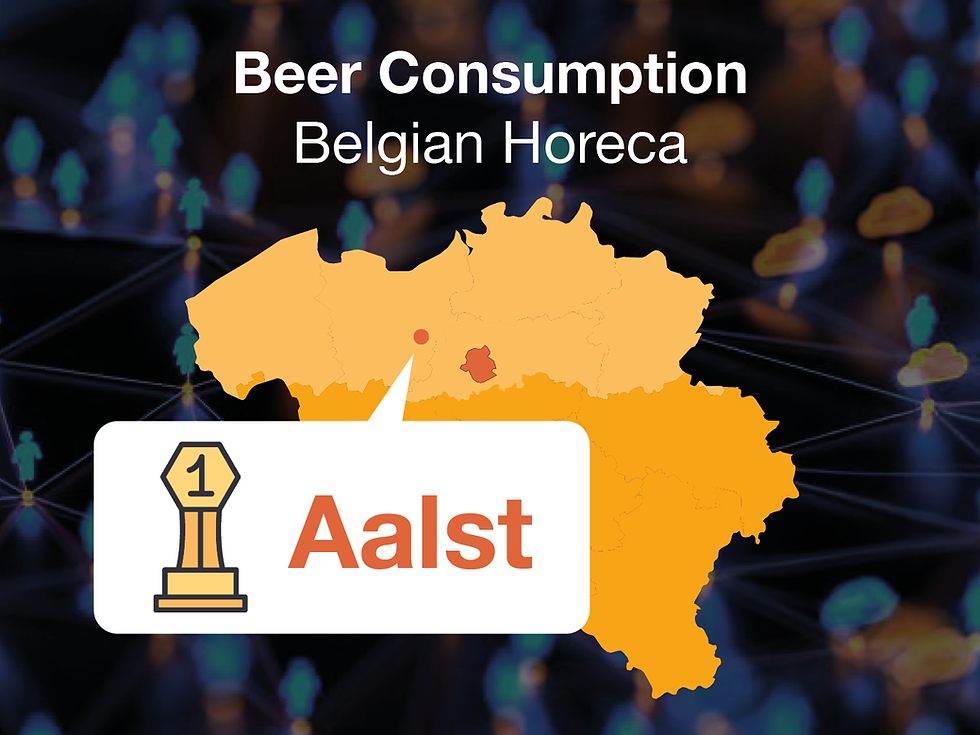What is Belgium’s Beer Capital? The Data Reveals All
- Amaury Marescaux
- Jul 30
- 2 min read
A new analysis by Gondola Foodservice highlights major regional disparities in beer consumption across Belgian cafés and restaurants — with a few surprising results.

While beer remains a cornerstone of the hospitality sector in Belgium, the volume consumed varies greatly from one city to another. Based on average figures per establishment, the study reveals sharp contrasts.
Topping the national ranking is the municipality of Aalst, with an annual average of 11,679 beers served per establishment. That number doubles in February, during the Aalst Carnival — a major local event that temporarily but significantly boosts consumption.
In the capital, it’s the City of Brussels that stands out, with 6,164 beers served annually per establishment. The dense concentration of bars, breweries and restaurants in the city centre largely explains this result.
In Wallonia, Louvain-la-Neuve leads the way. While one might intuitively link this to the student population, beers consumed in student clubs are not included in the study. The figure is more likely driven by a young and active demographic, including recent graduates and young professionals.
At the other end of the scale, some municipalities show surprisingly low numbers. Beveren records the lowest consumption in the country, with just 316 beers per establishment per year. In Wallonia, Liège also surprises with only 598 beers, despite its festive reputation. In the Brussels Region, Woluwe-Saint-Lambert ranks last, with 680 beers annually per horeca venue.
These disparities highlight the direct impact of local context on consumption habits. Demographics, the local horeca offer, and festive events all play a key role. In a sector still weakened by successive crises, this data offers valuable insights for operators and suppliers looking to adapt their commercial presence more closely to on-the-ground realities.
Amaury Marescaux




